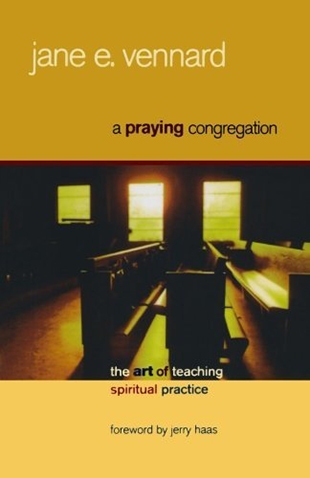George Arthur Buttrick, a renowned preacher, once said, "Pastors think people come to church to hear sermons. They don't: they come to pray and to learn to pray." Jane Vennard, a United Church of Christ pastor and spiritual director, agrees. As adjunct faculty member at Illif School of Theology, Denver, she has created courses on prayer, spirituality, spiritual direction, and retreat design and leadership. In this helpful and accessible paperback, Vennard presents a variety of ways to teach congregations how to pray. In order to do so, members of the church "must be free to share their deepest hopes and fears and to reveal what is most important to them." This requires the creation of a safe environment where people can bear their souls and practice deep and respectful listening.
A good starting place for a congregation studying prayer is an examination of the ways in which individuals have learned to pray. Memorized prayers, for example, "give us something to hold on to in times of pain, struggle, and grief." This discussion can be supplemented with a sharing of beliefs about prayer. Vennard includes some of her own:
• "I believe that prayer is a primary action."
• "I believe that prayer is all about our relationship with a God who loves us."
• "I believe that anything we do that honors, strengthens, or deepens our relationship to God can become a form of prayer."
• "I believe that prayer is not an escape from the world, but rather calls us more fully into the world."
• "I believe that God hears our prayers."
• "I believe that prayer is a mystery."
Many churchgoers cling to childhood images of God (a scorekeeper, a king, or a puppeteer) and need to explore new images of God (such as the panentheistic image of God). Vennard suggests this exercise:
"God is multifaceted and mysterious, beyond even our wildest dreams. Draw on all the images of God that make sense to your mind, heart, and experience. The image of God you hold will determine how you pray and what you pray for. As you seek to grow in prayer and your relationship with God, however, practice praying with those images that invite intimacy, give comfort, challenge you to new ways of prayer, and encourage you to pray without ceasing."
You can bring fresh vibrancy to your prayer life by practicing the presence of God, by following your own Rule of Life, and by having a spiritual director or soul friend. By renewing our spirit with these practices, we can become prayer teachers to others. Vennard concludes with succinct forms of prayer to explore such as intercessory prayer, body prayer, arrow prayers, musical prayer, centering prayer, lectio divina, gratitude, work and service, and praying out loud.
